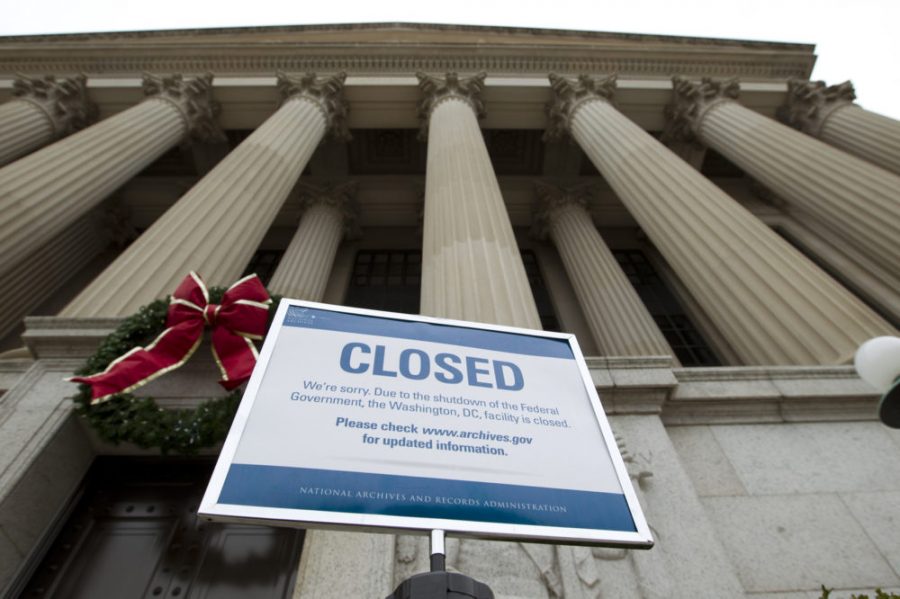Shutdown for What?
A closed sign in front of the National Archives in Washington, D.C. as the government shutdown stretches into the new year and it’s third week.
January 11, 2019
The United States government rang in the new year with a partial shutdown for reasons that remain obscured. The true cause of the government shutdown is highly polarized difficult to comprehend.
The shutdown, which has prevailed for 21 days and has become the longest shutdown since 1995, began after a demand from the president for upwards of $5 billion to fund a physical barrier wall at the southern border of the United States with Mexico, and the congressional Democrats subsequent refusal. President Trump has previously asserted that the Mexican government would provide all funding for the border wall but has since, albeit reluctantly, accepted a lost cause.
Refusal after refusal, Donald Trump Jr. saw no other option but to commit to a government shutdown. A shutdown which Trump avowed could last “months or even years.” Alas, the stiff arm from Democrats like Senate minority leader Chuck Schumer and Speaker of the House Nancy Pelosi continues.
Wednesday, for example, President Trump reportedly stormed out of a meeting with Pelosi and Schumer deeming it a “total waste of time” as the withholding of funds continued. Meanwhile, the inaction causes government agencies to close or function without the funds to pay it’s employees. Air traffic controllers are working unpaid, the FDA has furloughed 40% of it’s employees and has suspended routine inspections of food processing facilities, and, perhaps most ironically, immigration courts are closes and services halted.
Many facilities under government jurisdiction—national parks for example—have been trying their best to stay open and create loopholes in wage-related conflicts. Partial government shutdowns such as this are not irregular but, for the most part, previous government shutdowns have let up easy and began with adequate-enough warrant.
Even so, the shutdown continues without agreement or foreseeable resolution, and we are in the all-too-familiar position of bearing through the inaction and praying or bipartisanship.


